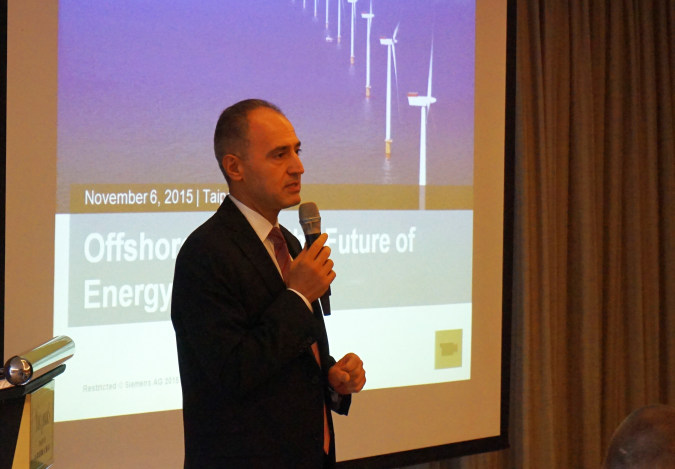Offshore wind energy developments

The use of renewable energy continues to increase globally but it is important to make renewables more affordable and competitive versus fossil fuel sources.
In Germany, renewable energy sources account for about 18% of the energy mix (wind accounts for 9%, solar 6% and hydro 3%). If you were to classify biomass (7%) and household waste (1%) as renewables, this would bring renewables to 26% of the energy mix. However, during peak periods renewables account for a much higher proportion of electricity generation. On 25 July 2015, Germany hit a new milestone when solar, wind, and other sources of renewable energy met 78% of that day's energy demand. Last year, wind energy supplied 39% of Denmark's annual electricity supply, and that country is on track to realize a 50% target from wind by 2020.
German authorities plan to increase renewable capacity substantially in the years ahead and have a target to get most of the country's energy from renewables by 2050. By comparison, wind energy only accounts for 0.8% of Taiwan's energy mix currently. According to Elver this is a missed opportunity since wind energy is one of the most important and viable sources of renewable energy in Taiwan. Taiwan has strong and consistent offshore wind, especially along its north-west coast, one of the few areas in Asia with average wind speeds that are comparable to those of northern Europe, which is home to major offshore wind farms. This means that there is huge potential for offshore wind development in Taiwan as well as the potential for Taiwan to develop into a regional role model for offshore wind. According to Elver, Taiwan has the potential to install capacity of 6-10 gigawatts (GW) of offshore wind capacity and in full-load hours, this is about 10-15% higher than EU projects.
The Taiwan government has issued licences to three entities to develop offshore wind in Taiwan. Earlier this year, Taiwan's Ministry of Economic Affairs raised its offshore wind target to four gigawatts (GW) by 2030 as part of Taiwan's overall renewable energy target. In addition, the government has also identified 36 areas off the west coast with water depths of 50 metres that would be suitable for offshore projects. Taiwan's offshore wind developers are also actively fostering the deployment of offshore wind to support the national renewable targets. While this is a positive development, things are moving slowly owing to problems in getting access to financing as well as difficult administrative procedures, including a strict environmental impact assessment approval process. Government assistance will be needed to address these problems and speed up renewable energy capacity in Taiwan.
Siemens is one of the world's leading suppliers of wind power solutions with an installed base of 14,300 turbines and a combined capacity of 25,400 MW. According to Elver, the company has an order backlog of 7.4 GW (offshore and onshore). Moreover, the firm is a pioneer and market leader in offshore wind with an installed base of 1,470 turbines and 4.7 GW of capacity with 24 years of experience (the company built the world's first offshore wind power plant in Vindeby Denmark in 1991). According to Elver, Siemens' turbines have proven 20+ year product lifetimes and provide 95% real availability.
While it is more costly to develop offshore wind (given technical, transport and construction costs), there are a number of advantages. The most important advantages are that wind tends to be stronger offshore (generating more output) and offshore turbines do not take up valuable land space, which is an important issue for Taiwan. Moreover, as technology improves, costs continue to fall. Modern wind turbines are now far more powerful than their predecessors. While early turbines had blades just 11 metres long and provided 30 kilowatts of power, the latest versions have blades that are almost 80 metres long and generate up to 7 MW of energy. Technology has also improved the way turbines are managed. Modern turbines can be monitored and controlled remotely. Besides generating electricity, wind energy also creates good jobs related to the manufacturing of turbine parts, construction and installation and maintenance of turbines.
